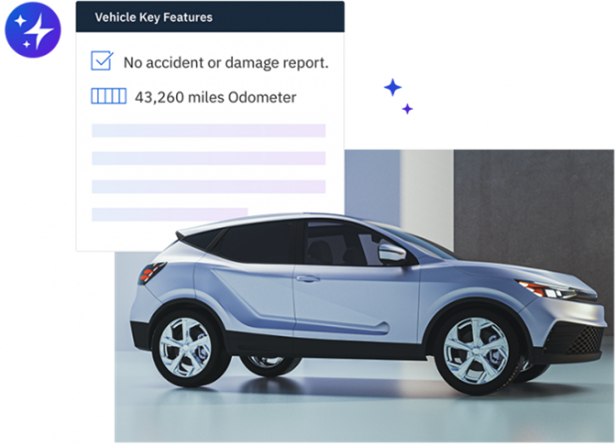Accessible, Accurate, Actionable: The 3 A’s Behind Optimizing Your Data To Close Leads

Article Highlights:
- Manually adding customer data interrupts your team's profitable tasks.
- Optimize your data to pursue and close leads.
Customer information is essential to any dealership’s daily operations, and making sure your data is available to you in real-time is the key to achieving your lead and sales goals.
However, many dealerships often struggle with muddled data as a result of using different tools throughout their sales processes. What does this look like in practice? Lost time filtering through multiple tabs to find the information you need for just one customer. Or searching for a customer to find duplicate records and having no clue which contact or deal information is still correct.
Your dealership needs data that is accessible, accurate, and actionable. Accessibility means making sure all customer, deal, and vehicle information can be found quickly, in one place, and from any device. Accurate data keeps deals moving and customers happy, meaning your sales department runs efficiently and meets goals. And lastly, actionable information allows your dealership to take clear, prioritized steps to pursue customers. Let’s dive into each of these points and why they’re important to your dealership.
Accessible
You could have all the information about a customer you need to close a deal, but it’s no good if you aren’t able to find it when you need it.
Information like sales or service history may be scattered between your DMS, CRM, and service solutions. Engagement with marketing materials or online may only be accessible in different applications. Credit applications or finance preferences may live in your in yet another place. Having to sift through multiple tools or applications to access each piece of information slows down your process.
In a study done by HubSpot, salespeople were asked what the most frustrating aspect of having to use multiple tools was. The top four responses all centered around switching between tools and connecting information in different places— issues that come down to how they optimize their time. While not being able to access data could lead to negative customer experiences, it also could lead to frustrated employees who would rather be making themselves (and you) more money.
Another important factor that contributes to accessibility is the device you use. Imagine having everything in the palm of your hand instead of having to leave your customer multiple times, like the times you check in with your manager or rerun numbers during negotiations. You could use your phone during a test drive to input or reference information as if you were working directly from your desk. Or you could review the finance preferences the customer started submitting online before they came in, while you guide them to their chosen vehicle on the lot.
Being able to easily access your information is beneficial, but what good is it if it’s not accurate?
Accurate
Searching through multiple, disjointed tools can increase the likelihood that information is incorrect in one place or another. A common error is finding a mistake in your customer’s record and only remembering to fix it in the tool you were using, leaving inaccurate data in the other applications. For example, your DMS shows the customer bought a new truck in 2022, but your CRM and marketing database show they still own a car from 2015. Now, your team may start targeting the customer with emails, texts, or direct mail encouraging them to upgrade, even though they just got their new vehicle.
Inaccuracies like this example cost your dealership something that you can never get back… time. Your employees end up wasting their time sending communications and marketing to customers who aren’t in market or sending inaccurate information to those who might be, causing them to not consider you. Factor in other items like the actual dollar amount to printed mail, and you could also be wasting money.
However, if your employees could enter customer information once and automatically update across all tools, they would be free from constantly reentering information or referencing old data during prospecting.
When your customer information is accurate and easily accessed, that’s it, right? Not quite.
Actionable
The final piece of customer information is the ability to review clear action items that are relevant to the customer’s current situation. Actionable data means the customer information you have is used to prioritize tasks and complete steps toward your goals.
How often is your team opening multiple tabs across multiple tools to find all the information, then trying to assume what you need to do next? Or worse, how often is your team not doing the research and they start the sales process from the beginning?
Not taking the time to learn about the status of a lead or deal results in unhappy customers and sometimes, lost deals. However, taking that time to research their opportunity builds up hours every month just to track down information—hours they could use to pursue more leads, sell more cars, and make more money.
Your employees’ daily workload should rely on an efficient process: creating and prioritizing tasks based on the type (like marketing reminders, birthday messages, or lead submissions) and the customer’s likelihood to buy. It would significantly reduce the time spent manually differentiating and organizing their various tasks.
Accessible, accurate, and actionable are the three A’s to keeping your sales department running efficiently. HubSpot has found that 82% of salespeople lose up to an hour a day managing tools. That means your dealership is losing productive selling time simply because your tools don’t communicate. Not to mention the frustration that comes from both your employees and customers when information isn’t correct or available.
What used to require multiple tools to track marketing engagement, retail steps completed online, chat conversations, sales and service history, and more should only require one to protect customer data and ensure it is accessible, accurate, and actionable. It’s time that your CRM actually manages your customer relationships in a way that makes your teams more efficient and your dealership more profitable.
Related Articles:

The Future of Variable Ops with Experts at NADA 2025
Explore how AI is transforming variable operations in automotive retailing with insights from NADA 2025. Learn about efficiency, profitability, and fraud prevention from industry leaders.

Decision made regarding the Vehicle Shopping Rule – now what?
Check out five key takeaways from the Vehicle Shopping Rule to keep your dealership safe from FTC enforcement actions.

3 Ways AI Can Elevate Your Dealership’s Online Inventory
On average, Americans are exposed to between 4,000 and 10,000 advertisements every day. From commercials on TV to billboards on your way to work, all…

The Pizza Playbook – What Ordering Pizza Teaches Us About F&I
For as long as I can remember, my family had “pizza night” every week. Without fail, every Friday evening we’d all gather around the computer…














